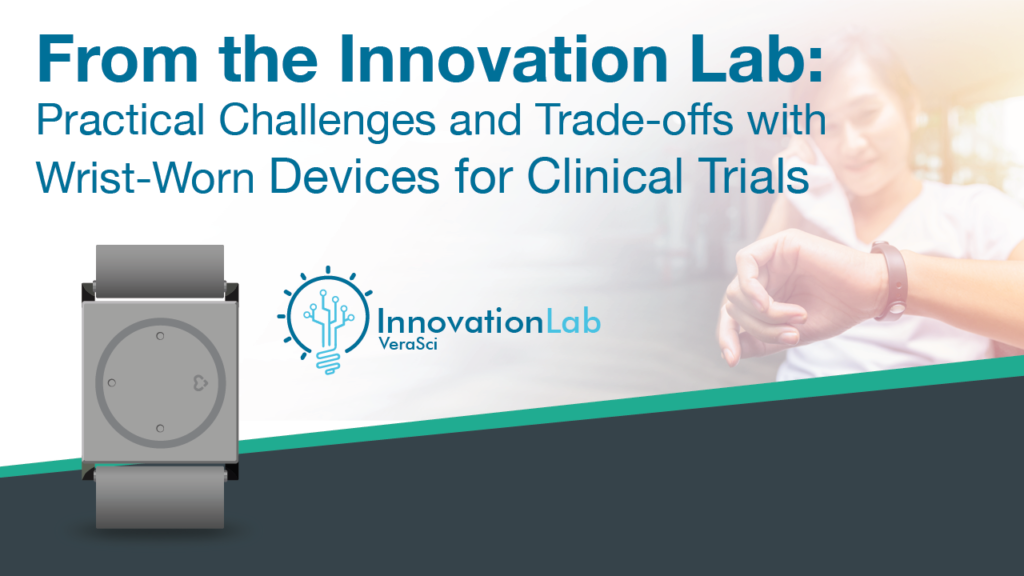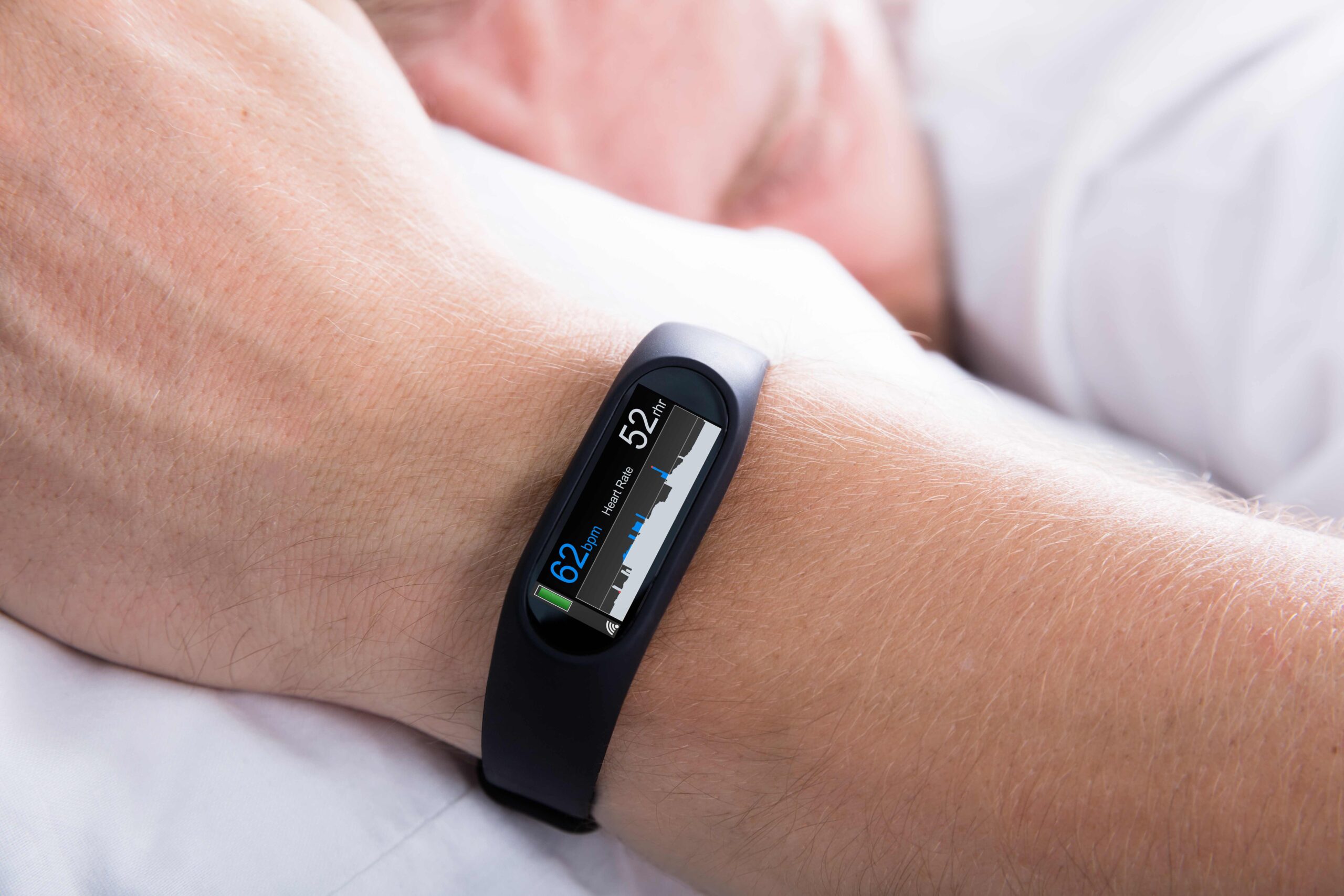
This blog series shares what’s happening day-to-day in our Innovation Lab long before we share the results in publications or at conferences. The VeraSci Innovation Lab was created to pair scientific knowledge with cutting-edge technology to improve the tools and measurements available for use in clinical trials.
Wearables present an incredible opportunity to collect data in ways that simply haven’t been feasible before. We can gather information that reflects patients’ daily living activities rather than looking at how they behave in a hospital or clinic setting. Here at the VeraSci Innovation Lab, one of our current interests is evaluating industry-grade wearable devices for real-time functional assessment. We are interested in devices that could have broad applicability to our therapeutic areas of interest, such as Alzheimer’s Disease and other forms of dementia, schizophrenia, and depression. Our focus is on devices that have the potential to produce reliable endpoints that may ultimately pass the high bar set for use in regulated clinical trials. One device type we’re evaluating is a wrist-worn device that offers continuous measurement of heart rate, motor activity, skin temperature, Galvanic skin response, and sleep. In a previous post, we discussed the selection criteria for the devices we chose.
From the outset, we understood that any device would have challenges, and we would need to learn to resolve or mitigate the difficulties in order to capitalize on the benefits of wearables. We understood based on the device selection process that we were making some trade-offs. Some of these challenges we accepted upfront because the benefits provided by other aspects of the device made handling the challenges worth it. Some challenges were unanticipated, or we underestimated the magnitude of the challenge. As we’ve started working with the devices, both in using them ourselves in the lab and conducting some preliminary non-interventional studies in study subjects, we’ve run into several practical challenges.
Device Pairing
The wrist-worn devices we are using in our study need to pair to the smartphone using Bluetooth to transfer data. Due to limited internal memory, if the device goes without pairing for too long there is the potential that data would be lost. Blue tooth is an inherently unstable connection, so we anticipated that the connection would drop from time to time. What we hadn’t expected was that occasionally the connection between the devices would not be re-established automatically when the devices were back in range. However, we have found that with support, most subjects are willing and able to maintain the Bluetooth connection required to keep data transmitting to the cloud server.
Unhelpful Alerts
The wrist-worn devices we selected generate a number of alerts. The most common is an alert related to the Bluetooth disconnects mentioned above. Most of the time the Bluetooth connection repairs without any need for user intervention. Unfortunately, the wrist worn device does not allow adjustment of the alert settings (e.g. length of disconnection before activating an alert), so the subject is alerted to even these momentary drops in the Bluetooth connection. Although we tell all subjects that momentary drops in the Bluetooth connection are nothing to worry about, some subjects are nonetheless concerned by the alerts and call our help desk for guidance.
Compliance Monitoring
A major consideration in our choice of wrist-worn actigraphy device was the ability to see the data as it was collected and thereby monitor subject compliance during the study. This ability has allowed us to intervene early in the study when a subject hasn’t used the device as instructed. For example, when we noticed that a subject wasn’t wearing the device overnight, we were able to remind them to wear the device to bed. For our study, we feel that the ability to monitor subject compliance and intervene as necessary has outweighed the difficulty of supporting a somewhat finicky Bluetooth setup.
